[In part one of this series, Toyama explained how he approached his Kickstarter for his Home of the Brave project. In this episode — it begins!]
Here’s what our first 24 hours looked like:
5 am – Coffee. Lots of Coffee. Hit the launch button. Create bitly link (bitly.com gives great analytics and allow you to track the reach of your link outside of Kickstarter). Text, email, and Facebook message friends on EST and CST. I made sure to message people individually and not as a group, as I thought this would better my chances of getting them to repost our campaign.
7 am – More coffee. Hit the $1k mark. Text, email, and Facebook message friends on Mountain and Pacific.
9 am – We were a staff pick on Kickstarter and the most popular comics project with over 20 pledges and over $1,500 raised. We were actually beating out Steve Niles and Ben Templesmith on live volume, which was sort of awesome because we ran into Ben at the New York Comic Con a few days later. This is when I started hitting up the meat of our network in Hawaii (where I reside). I prepared a press release and emailed it out to the local media, to let them know that we were the most popular Kickstarter project in Hawaii, the most popular comic book project nationally, and a staff pick. I sent the same press release to comic book blogs, anime blogs, and gamer blogs.
10 am – We were featured on girlgamer.com and ani.me. I followed up with blogs to show that we were receiving attention from other media outlets and would be happy to provide them with an interview or provide them with more resources should they be interested. I continued to hound everyone I knew to repost about our project, and started reaching out to subject adjacent blogs and tweeters. Our book was at about $2,500 at the time.
11 am – More social media blasting. I started to feel bad for my friends and family for how much I was bugging them, but for the most part they were all very supportive, and most of them were posting and pledging. The general Kickstarter audience was now paying attention and we were getting more external pledges. My twitter and Facebook feeds were now being flooded with posts of our project. I may have exhausted my immediate network at this point.
12 pm – I may have ran out of friends at this point and counted about 80 text messages sent, 200 direct Facebook messages, and and another 40 or so tweets. More coffee.
Honolulu only has one newspaper, and we received a call back from the features editor for the online weekend edition called Pulse and conducted an interview.
1 pm – I requested my friends to do what I was doing; bug everyone they knew to evangelize the project. We hit about $4k by this time, which is about 33% of our goal total.
2 pm – followed up with comic book blogs (still not much traction). I swear, when this is all done, I may never use Facebook or twitter again. Began writing individual thank you’s to everyone that pledged and asked them to tell everyone they knew about the project. This ended up taking me to the end of the day and I was pretty exhausted at this point. Thankful for the support everyone has given, but incredibly drained.
By 8 pm that night, we raised about $5,000 dollars and continued to be one of the most popular Kickstarter Comic Book projects for the next few days. Within 24 hours, we hit $6,000, which was 50% of our total goal.
The Following Weekend
We planned on having a launch party the Saturday after we hit the launch button to remain on people’s radars, but also as an excuse to raise money for the Pacific Alliance to Stop Slavery (A huge inspiration in creating our book). It’s against Kickstarter rules to have money that is meant to be contributed to a project to go to a non-profit, which is a rule I completely agree with, as it helps to keep the focus of the community on creativity. We had all of the cash from the bar go to the PASS, but had computer terminals set up so people could login to Kickstarter.
This was actually a huge mistake that I should have seen coming. If you’re going to have a party to launch your project, keep interaction with Kickstarter as minimally as possible. This may defy logic, but people are generally going to a party because they want to party, and your launch is just an excuse for most people to do so. It actually takes a fair amount of time (up to 5 min for those that aren’t so familiar with modern user interface), and is time that most people don’t want to spend at a computer when they could be socializing. I wish that I had simply set up a mail chimp account and collected people’s email addresses to remind them later.
It’s actually a whole lot easier to collect people’s information than it is to convince them to go through a six screen process that may require a credit card and five minutes. This is a fantastic lesson to learn and would come in handy when we attend the New York Comic Con.
New York
I really don’t recommend catching a 10 hour flight after you throw a party with an open bar (we were lucky enough to have alcohol donated to us by a local liquor distributor) and cleaning up the place until the wee morning hours, but this is what we planned. Jon and I stayed with a friend in Brooklyn, and were set up to get to work as soon as we landed, with a good amount of time spent in cafes sending out tweets, thank you messages and sending out press releases about how we were a popular project on Kickstarter to comic book blogs. I always tried to show other bloggers where we’ve been covered to help qualify us as newsworthy, as we were initially covered by ani.me and girlgamer.com. I’m still not sure if this strategy worked or possibly annoyed journalists that we didn’t approach them first.
Home of the Brave is about a sex trafficking survivor, so we pleaded with the Somaly Mam Foundation [an organization dedicated to ending slavery worldwide] to see if we could get a meeting. We wanted to ensure that we weren’t glorifying human trafficking in any way, and also receive insight as to how we could be a part of the solution. They were incredibly helpful to us and connected us with some of their twitter followers and featured our book on their website. I am continually humbled by the experience of meeting Izzy Katz and the staff at the Somaly Mam foundation and their incredible work. It’s changed my life forever in a rather profound way, but it also taught me the most valuable lesson in social networks on and off line. Love really does pay off, and the more genuine love you give, the more you’ll get back. Sorry, that’s a giant jurassic load of sap, but I’ll stand by my sappy sappiness until the day I die.
After meeting with the Somaly Mam Foundation (by the way, read The Road of Lost Innocence by Somaly Mam or go to Somaly.org), we spent a day going to every comic shop in New York and giving away free copies of our 30 page preview. We knew that no one would know who we are or be familiar with our work, so we printed 1,000 copies of our first 30 pages. This was somewhat of a large gamble, because if we didn’t hit our Kickstarter goal, I would forever be out a few thousand dollars. I have faith in our work, and believe that if people had a taste of what we were trying to create, they’d back us. We may have gone a little overboard, and I was honestly nervous about this investment, but I also wanted to prove to myself and our audience that two first-time creators were capable of producing a great book. We passed out roughly 200 books to the different shops across Manhattan, which was obtusely heavy in a walking city like NYC.
New York Comic Con
NYCC is a great experience, and only the second con that I’ve attended. Why would we fly all the way out for a con on the other side of the country to promote a Kickstarter project? For the most part, we just wanted to attend and celebrate our passion for all things comics, but it’s also a great opportunity to be surrounded by people that have a love for the medium or other Kickstarter creators. If you could instantly surround yourself with thousands of potential backers and media, consider it a golden opportunity. To save on cash, we used credit card miles that I pretty much never use and stayed with a friend in Brooklyn.
Jon and I were carrying about eighty pounds of comics each to the con, prepared to pass out as many free comics as we could (we applied for a table but didn’t qualify as first time creators). This was harder than it should have been. The average person at a con is surrounded by so many costumes, so much swag, it’s actually sort of difficult to get anyone’s attention on the main floor. We devised a strategy of prioritizing opportunities that would have both an impact on the web and potential readers and customers. Here’s what we hit:
Any panel featuring new media or web. Almost every panel has a line full of bored people, so Jon and I would maneuver through the queue passing out as many books as we could to these tech savvy audience. The new media panels (i.e. comixology, webcomics, etc.) were all people we knew to be on the web, and would hopefully tweet or share our project on Facebook. We handed out books in exchange for promises of tweets and shares. I’m not sure if they actually did so (NYCC wi-fi, 3G, and LTE were all pretty terrible), and in retrospect I should have collected email addresses instead.
Artist Alley. A lot of artists in the alley were Kickstarter creators themselves, which means they were online and were in touch with the Kickstarter audience. We did our best to network the alley floor, giving away books and asking if any of those creators had a kickstarter project of their own. We found that giving away some free product was a great ice-breaker, and allowed us to create some new friends and supporters of our project. We also took pictures with some of the creators and posted it to twitter and facebook for their followers to hopefully catch on to. One thing I wish I did differently was attach our Kickstarter bitly link to all of our tweets and instagrams featuring the creators.
Jonathan Hickman’s fan line. A lot of Jon’s art was getting some favorable comparisons to Mr. Hickman’s work, so whenever he did a signing, we found the line and would hand out books to everyone in it. It’s difficult to say how effective this was, and I hope we didn’t annoy Mr. Hickman, because I’m personally a huge fan of his work.
The Kickstarter table in Artist Alley. We had no idea they would be there, but seeing the Kickstarter table evoked a sense of comfort. It made me feel just a little less alone in this quest, and I did my best to connect with the other creators and Kickstarter staff at the table. Everyone at the Kickstarter booth was incredibly sweet and helpful, answering the same questions to potential creators repeatedly. I felt for them, but then again, I was pitching the same book a few hundred times to the NYCC audience as well. They were gracious enough to allow us to leave a few copies of our book at their table, which is actually prime real estate for featuring a live Kickstarter project.
I mention all of the above items, not because they’re easily replicable (There’s a fair amount of luck involved), but because it’s an example of identifying targets and emerging opportunities. We didn’t know exactly which panels were going to be pertinent to us, but after studying the program, we were able to identify our potential audience, and what our best chances were of finding natural evangelists to our cause.
The great thing about cons is that press passes are colored differently from the other passes; a bright, bright yellow. I always did my best to respect those in the press, but would also stop every single one of them and ask them to read our preview. Most press people were very kind, and almost always took my book for review. I always asked for their card to follow up with them on the story, but also make myself available for any inquiries or interviews. We ended up being covered in Bleeding Cool, Comics Alliance, Graphic Policy, The Lottery Party, Indie Spinner Rack, and Comics Beat.
I always figured that blog reviews would take a week or two to hit, which is why we always envisioned the length of our project to end at least two weeks after a con. By the end of the con, we had passed out over 600 books and were at over $10,000 of our $12,000 goal. We flew back home rather exhausted, but inspired by the creativity of NYCC and the bravery from those at the Somaly Mam Foundation.
The Road Home
The remainder of our time running our Kickstarter campaign was spent following up with bloggers, press inquiries, and podcasts. All fantastic things, but if you’re introverted (as I sometimes can be), it’s exhausting. After day 30, I was prepared to never talk to another human being for the rest of my life.
We hit our goal on day 17, and raised $13,846 in total, which is 115% of our goal of $12,000. There is definitely some luck involved, but planning, strategic direction, specific goals, and a project that you believe in can drive a lot of pledges. We did not raise over $100,000, but I’m still working on those pre-requisites.
[Editor’s note: while the above shows what hard work and planning Spencer accomplished for this project what he doens’t mention is that it’s also a very good, passionate project about something that matters. Here’s a six page preview of the project and you’ll see what we mean.]


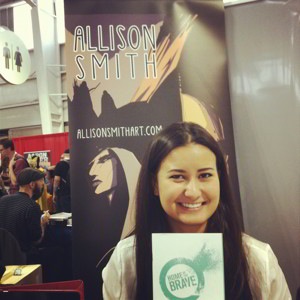
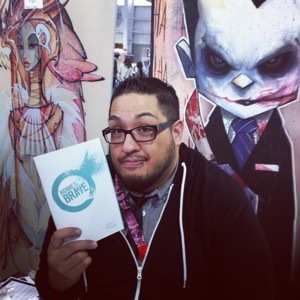
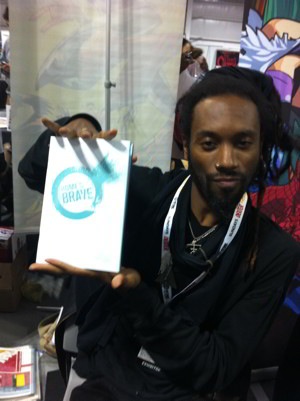
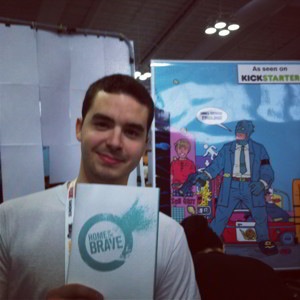

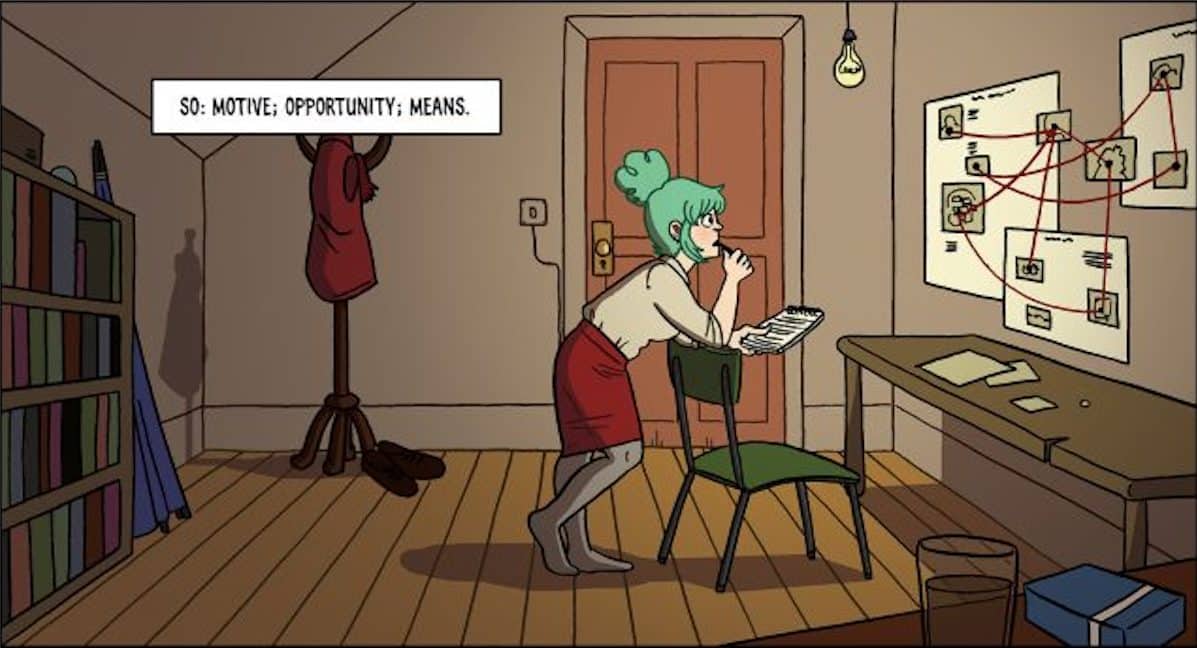
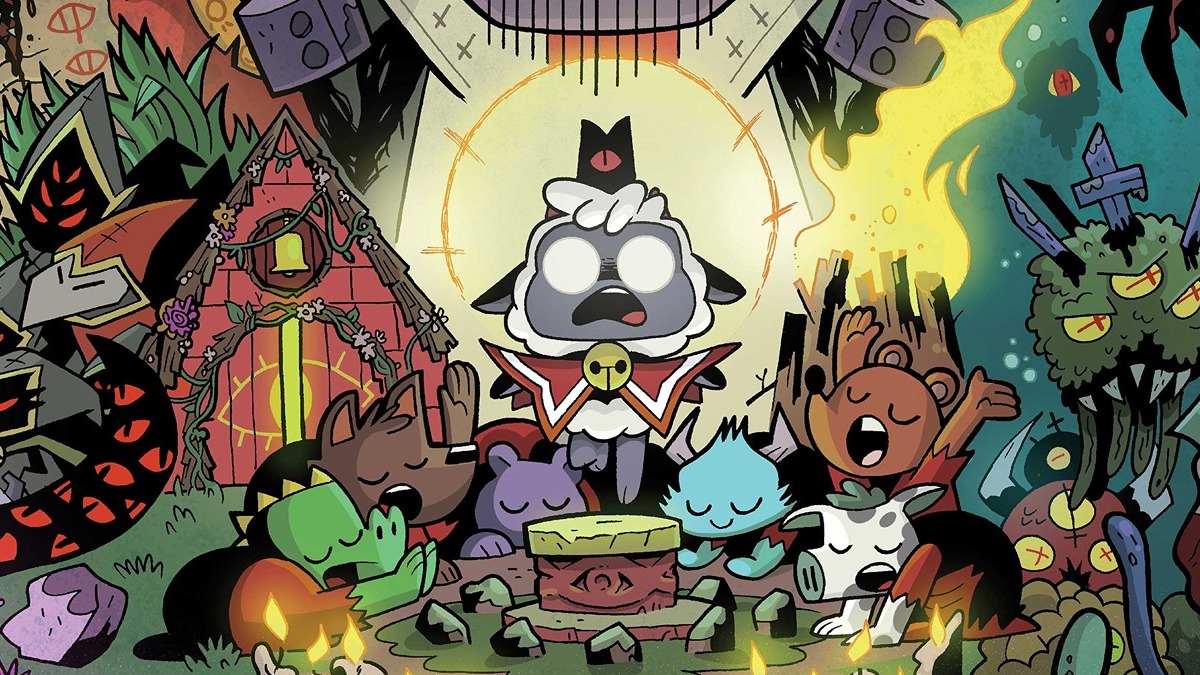
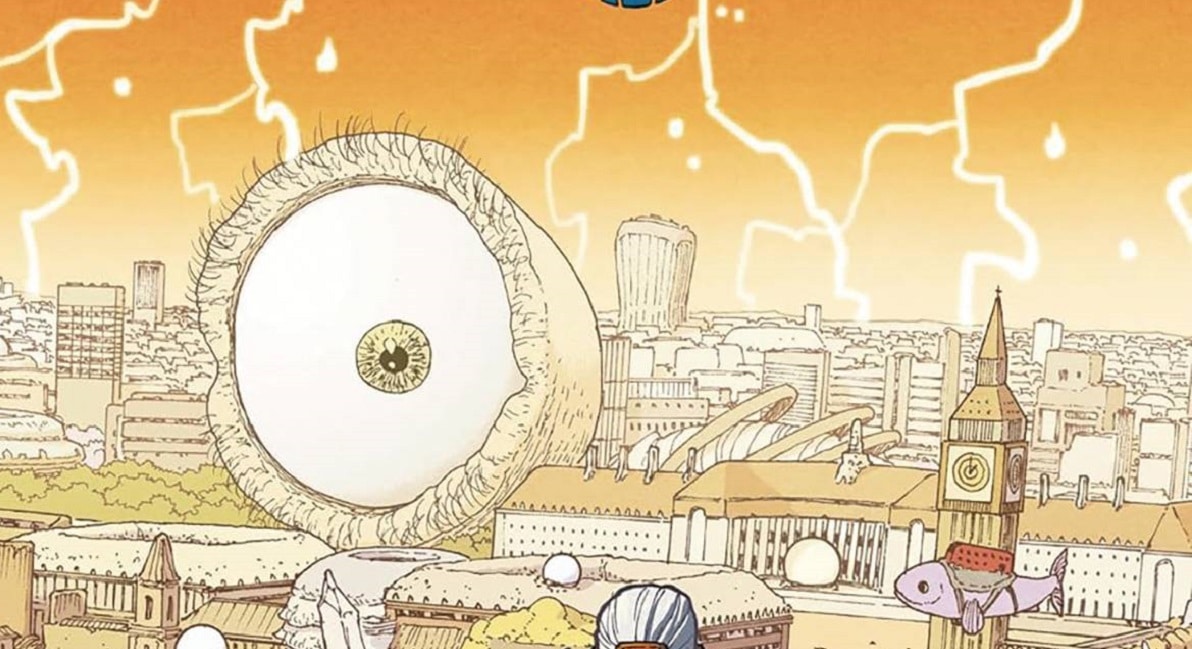

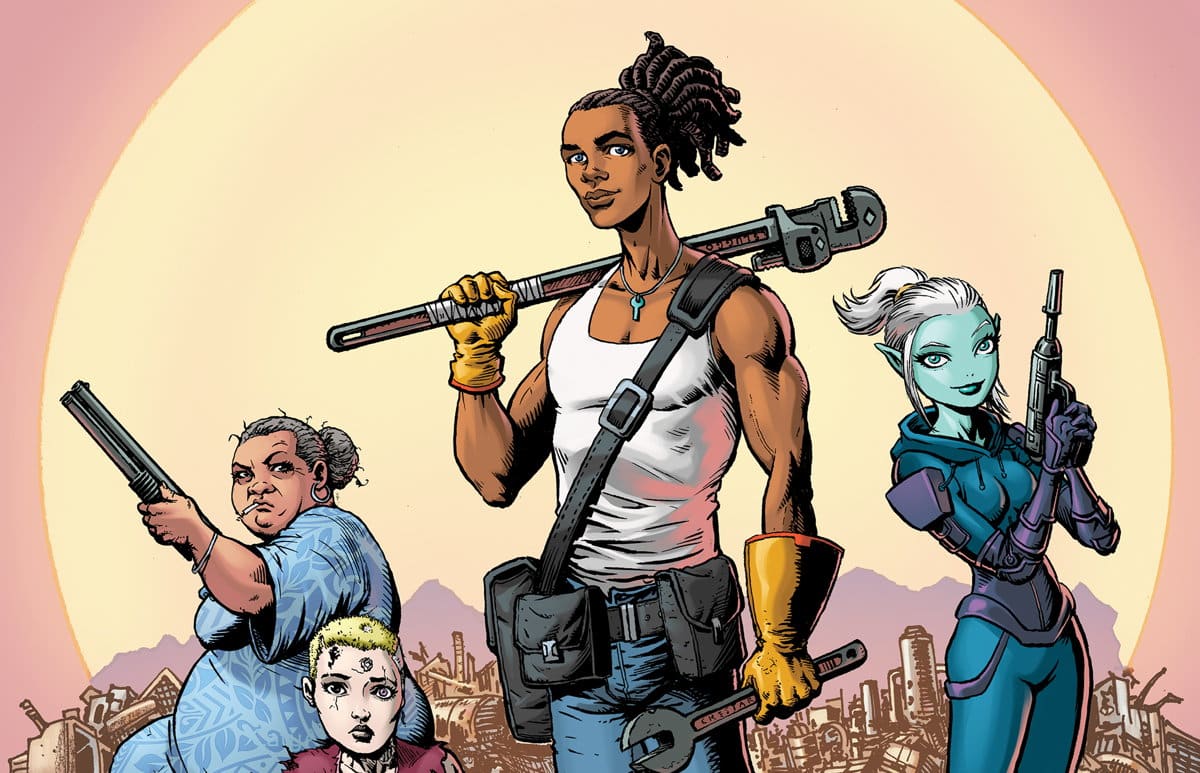


RT @Comixace: How to: A case study for a first-time Kickstarter, Part 2 — the first 24 hours to the end: by Spencer T… http://t.co/t …
Photos from top to bottom:
Allison Smith, creator of the recently funded Temujin
Chris Uminga, one of my favorite artists
Micah Blacklight of Portal1
Victor Ochoa of Nobodies and Toxicity
My advice is that if you’re an unknown you need to get in and take advantage of crowdfunding now while people still trust it. Everyone (not entirely wrongly) will see it as a complete scam after the inevitable string of high profile/high donation product not living up to promises or people just straight up taking the money and running.
After that only name creators will be able to get money out of people.
Johnny Memeonic,
I have been wondering the same thing.
@Johnny Memeonic I’m hoping that Kickstarter and other crowdfunding platforms will be abel to be a place for all types of creators to reach their goals. The longer campaign for a lot of us is to consistently put out work and build an audience, and my hope is that even small creators like myself will have a place to earn $5,000-$15,000 in pledges, but also allow more renown creators to have a place for their creator-owned projects and have a more democratized publishing industry. It will require more media and marketing savvy creators to take part, but I dont’ think that’s a bad thing at all. We are just at the beginning, and I’m looking forward to what else can be produced in a democratized platform.
@Johnny Memeonic – I’d guess that with a few highly public failures, that people will get more cautious, but that pledges will continue. After all, most people are already only pledging to projects that can convince them that they’re going to pull through. Granted, there’s still some people who just don’t understand Kickstarter and think of it as a store, but more and more, the concept of crowdfunding is becoming mainstream and better understood.
I’d say that going forward the best approach will be, as it has always been, to make sure that you can show as much evidence as possible that supports the basic idea that you can *and will* see this idea out, no matter what.
@Spencer – This is the best article on running a Kickstarter I’ve seen so far. Thanks for writing it! Our offer of an interview still stands too, if you’re not feeling too exhausted and introverted ;) There’s a link to our contact form if you click on my name. Good luck with completing Home of the Brave and getting it out there!
I have to wonder how long it’ll be before Kickstarter implements some sort of public feedback/ratings system for project creators.
@Piers – Thanks! I actually submitted an inquiry yesterday (spencer(at)myhomeisbrave.com).
In regards to people not finishing projects on Kickstarter, this is actually the largest benefit of Kickstarter vs other crowdfunding platforms. I was lucky enough to talk to a few of the Kickstarter employees at their booth at NYCC, and they actually review ALL project applications and do their best to determine if the creators are actually able to complete the project or not. I don’t know what the statistics are, but i believe it’s a relatively small number of projects that have not delivered, and Kickstarter does their best to diminish the risk of these types of failures. Unfortunately, the failures are usually very large and very public, but most of those projects are in the electronics category (I don’t know of any in comics).
Ronald Montgomery liked this on Facebook.
Comments are closed.